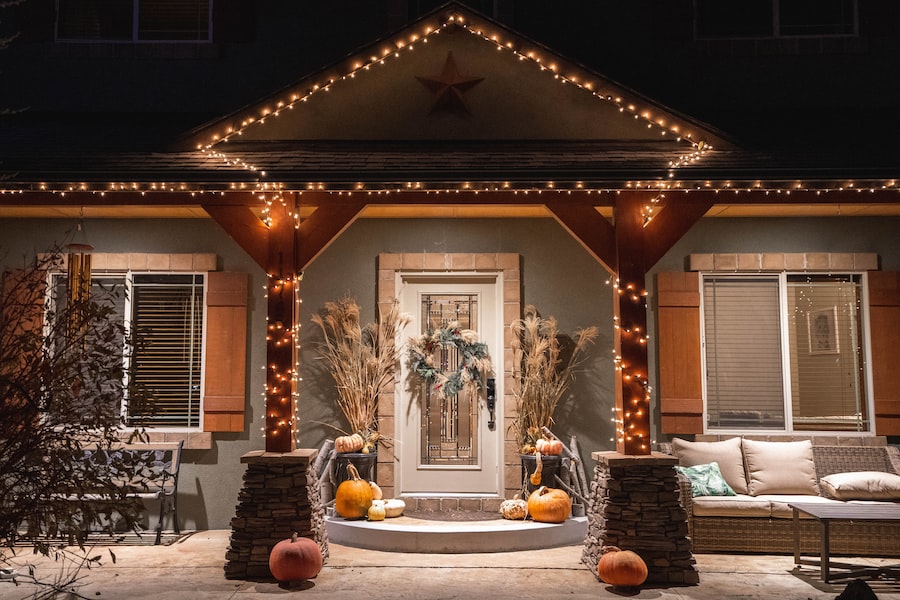Lighting plays a crucial role in interior design, as it has the power to transform the look and feel of a space. The right lighting can enhance the ambiance of a room, create a cozy and inviting atmosphere, and even improve productivity and mood. In this article, we will explore the importance of proper lighting in your living room and provide tips and advice on how to choose the right type of lighting for your space. We will also discuss the different types of lighting, such as ambient, task, and accent lighting, and provide examples of fixtures that can be used for each type.
Understanding the Importance of Proper Lighting in Your Living Room
Proper lighting is essential in creating the desired ambiance in your living room. The right lighting can make a space feel warm and inviting or bright and energetic. It can also affect your mood and productivity. For example, bright, cool lighting can help you stay alert and focused, while warm, dim lighting can create a relaxing and cozy atmosphere.
Choosing the right type of lighting for your living room is crucial. Different types of lighting serve different purposes and can be used to achieve different effects. Ambient lighting provides overall illumination for a room and sets the mood. Task Ilonalighting lighting is used for specific activities such as reading or working. Accent lighting is used to highlight specific features or objects in a room.
Choosing the Right Type of Lighting for Your Living Room
1. Ambient Lighting: Ambient lighting provides general illumination for a room and sets the overall mood. It is usually achieved through overhead fixtures such as chandeliers, pendant lights, or recessed lights. Wall sconces can also be used to provide ambient lighting. When choosing fixtures for ambient lighting, consider the size of your living room and the height of your ceiling. Larger rooms may require multiple fixtures to ensure even illumination.
2. Task Lighting: Task lighting is used for specific activities such as reading, working, or doing crafts. It should be bright enough to prevent eye strain but not too harsh. Table lamps, floor lamps, and desk lamps are commonly used for task lighting. When positioning task lighting fixtures, consider the height of the light source and the angle at which the light will be directed. Adjustable fixtures are ideal for task lighting as they allow you to direct the light where it is needed.
3. Accent Lighting: Accent lighting is used to highlight specific features or objects in a room, such as artwork, architectural details, or plants. It adds depth and visual interest to a space. Spotlights, track lighting, and wall-mounted fixtures can be used for accent lighting. When positioning accent lighting fixtures, consider the angle at which the light will be directed and experiment with different positions to achieve the desired effect.
The Role of Ambient Lighting in Creating a Cozy Living Room
Ambient lighting plays a crucial role in creating a cozy and inviting atmosphere in your living room. It provides overall illumination and sets the mood for the space. To create a cozy ambiance, consider using warm-colored bulbs or dimmers to adjust the brightness of the light. Soft, diffused lighting can also create a warm and inviting atmosphere.
When choosing fixtures for ambient lighting, consider the style and decor of your living room. Chandeliers can add elegance and sophistication to a space, while pendant lights can create a more modern and minimalist look. Wall sconces can add a touch of warmth and intimacy to a room.
Positioning fixtures for optimal effect is also important when it comes to ambient lighting. Consider the height of your ceiling and the size of your living room when determining the number and placement of fixtures. In larger rooms, multiple fixtures may be needed to ensure even illumination.
How to Use Task Lighting for Functionality and Style
Task lighting is essential for activities such as reading, working, or doing crafts in your living room. It should be bright enough to prevent eye strain but not too harsh. When choosing fixtures for task lighting, consider the style and decor of your living room. Table lamps can add a touch of elegance and sophistication, while floor lamps can create a more modern and minimalist look. Desk lamps are ideal for workspaces and provide focused lighting.
Positioning task lighting fixtures is crucial to ensure optimal functionality. Consider the height of the light source and the angle at which the light will be directed. Adjustable fixtures are ideal for task lighting as they allow you to direct the light where it is needed. Experiment with different positions to find the best placement for your specific needs.
Accent Lighting: Adding Drama and Depth to Your Living Room

Accent lighting is used to highlight specific features or objects in your living room, such as artwork, architectural details, or plants. It adds drama and depth to a space and creates visual interest. Spotlights, track lighting, and wall-mounted fixtures are commonly used for accent lighting.
When choosing fixtures for accent lighting, consider the style and decor of your living room. Spotlights can create a dramatic effect and draw attention to specific objects or features. Track lighting can be used to highlight multiple objects or create a focal point in a room. Wall-mounted fixtures can add a touch of elegance and sophistication.
Positioning accent lighting fixtures is crucial to achieve the desired effect. Consider the angle at which the light will be directed and experiment with different positions to find the best placement for your specific needs.
Tips for Choosing the Right Light Fixtures for Your Living Room
When choosing light fixtures for your living room, there are several factors to consider:
1. Size: Consider the size of your living room when choosing light fixtures. Larger rooms may require multiple fixtures to ensure even illumination.
2. Style: Consider the style and decor of your living room when choosing light fixtures. Choose fixtures that complement the overall design and aesthetic of the space.
3. Material: Consider the material of the light fixtures. Choose materials that are durable and easy to clean.
4. Energy Efficiency: Consider energy-efficient light fixtures to reduce energy consumption and save on electricity bills. Look for fixtures with LED bulbs, which are more energy-efficient and have a longer lifespan.
5. Scale: Consider the scale of the light fixtures in relation to your living room. Choose fixtures that are the right size for your space to ensure a balanced and harmonious look.
The Impact of Color Temperature on Your Living Room Lighting
Color temperature plays a crucial role in creating the right mood in your living room. It refers to the color of light emitted by a bulb, ranging from warm to cool. Warm lighting has a yellowish or reddish hue, while cool lighting has a bluish or whitish hue.
Warm lighting creates a cozy and intimate atmosphere and is ideal for living rooms. It can make a space feel more inviting and comfortable. Cool lighting, on the other hand, creates a bright and energetic atmosphere and is ideal for task-oriented activities such as reading or working.
When choosing light fixtures for your living room, consider the color temperature of the bulbs. Warm-colored bulbs are ideal for creating a cozy ambiance, while cool-colored bulbs are ideal for task-oriented activities.
How to Layer Your Living Room Lighting for Maximum Effect
Layering lighting is essential in creating a well-lit and inviting living room. It involves combining different types of lighting, such as ambient, task, and accent lighting, to achieve maximum impact.
To create a layered lighting effect, start with ambient lighting as the base layer. This provides overall illumination for the room and sets the mood. Next, add task lighting to provide focused illumination for specific activities such as reading or working. Finally, add accent lighting to highlight specific features or objects in the room and create visual interest.
Experiment with different combinations of lighting to find the right balance for your living room. Consider the size and layout of your space, as well as the specific needs and preferences of your household.
Creating a Lighting Plan for Your Living Room: A Step-by-Step Guide
Creating a lighting plan for your living room involves assessing your lighting needs and choosing the right fixtures. Here is a step-by-step guide to help you create a well-lit and inviting living room:
1. Assess your lighting needs: Consider the specific activities that take place in your living room and determine the type of lighting needed for each activity. For example, if you enjoy reading in your living room, you will need task lighting near your reading area.
2. Choose the right fixtures: Consider the style and decor of your living room when choosing light fixtures. Choose fixtures that complement the overall design and aesthetic of the space.
3. Position fixtures for optimal effect: Consider the height of your ceiling and the size of your living room when determining the number and placement of fixtures. Experiment with different positions to find the best placement for each type of lighting.
4. Consider energy efficiency: Choose energy-efficient light fixtures to reduce energy consumption and save on electricity bills. Look for fixtures with LED bulbs, which are more energy-efficient and have a longer lifespan.
Energy-Efficient Lighting Solutions for Your Living Room
Energy-efficient lighting is not only good for the environment but also for your wallet. It can help reduce energy consumption and save on electricity bills. Here are some energy-efficient lighting solutions for your living room:
1. LED bulbs: LED bulbs are more energy-efficient than traditional incandescent bulbs and have a longer lifespan. They also produce less heat, making them safer to use.
2. Compact fluorescent lamps (CFLs): CFLs are another energy-efficient option for your living room. They use up to 75% less energy than incandescent bulbs and can last up to 10 times longer.
3. Motion sensor lights: Motion sensor lights are a great energy-saving option for your living room. They automatically turn on when someone enters the room and turn off when the room is empty.
4. Dimmers: Installing dimmers in your living room allows you to adjust the brightness of the light and save energy. Dimming the lights by just 10% can reduce energy consumption by up to 10%.
When choosing energy-efficient light fixtures, consider the style and decor of your living room. Look for fixtures that are both energy-efficient and stylish to create a well-lit and inviting space.
Proper lighting is essential in creating a well-lit and inviting living room. It has the power to transform the look and feel of a space, enhance the ambiance, and improve mood and productivity. By understanding the different types of lighting and choosing the right fixtures, you can create a cozy and inviting atmosphere in your living room. Use the tips and advice provided in this article to create a well-lit and inviting living room that reflects your personal style and meets your specific needs.
If you’re looking to enhance the ambiance of your living room, lighting plays a crucial role. From pendant lights to table lamps, the right lighting can transform your space. In fact, according to a recent article on Sentra Kantorsby, understanding how many lumens are needed for pendant lights is key to achieving the perfect balance of brightness and style. By determining the appropriate lumens for your living room, you can create a warm and inviting atmosphere that suits your personal taste and preferences. To learn more about this topic, check out the article here.



